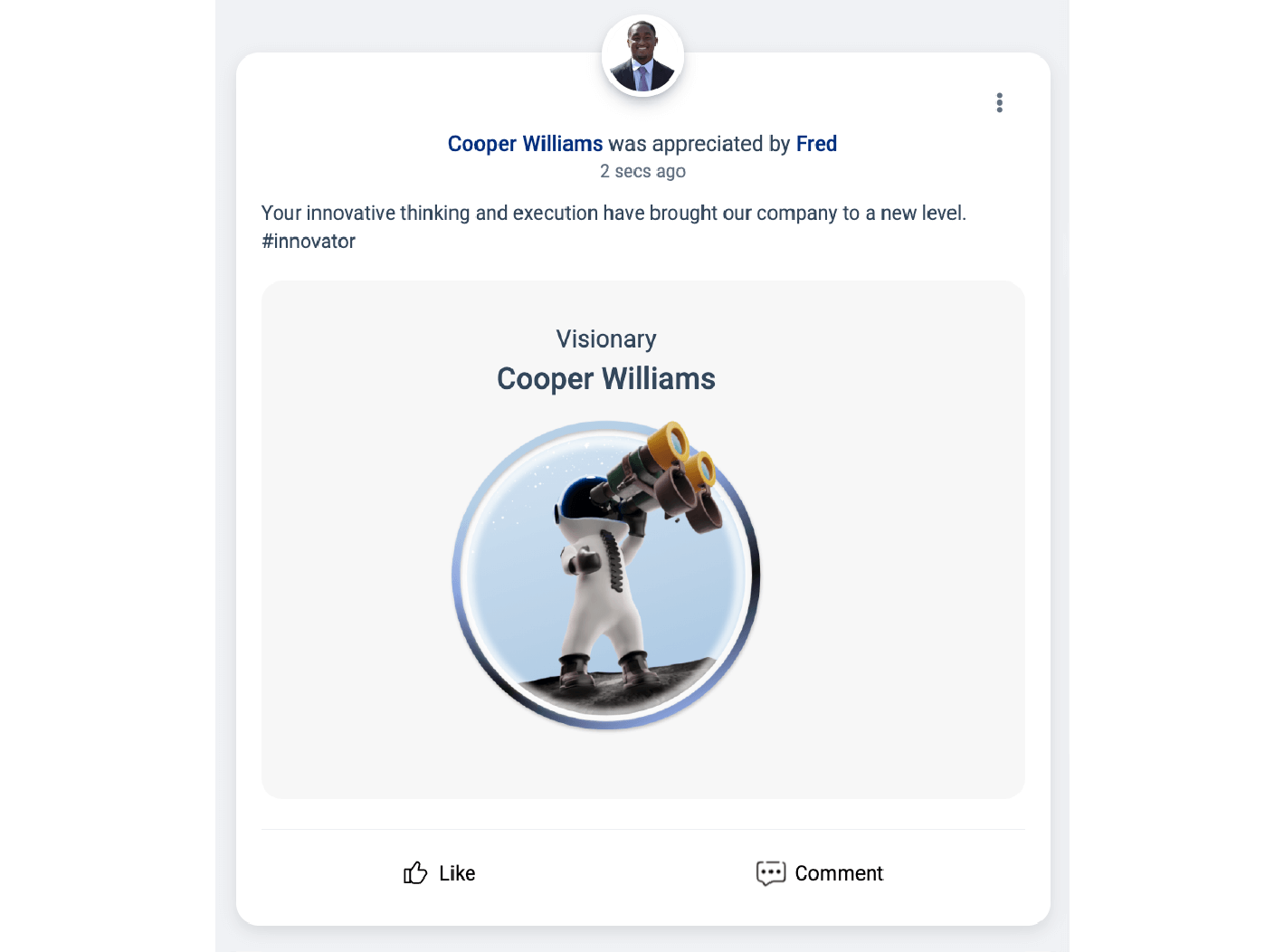Why Do Employees Stay? 8 Crucial Retention Factors
In a constantly evolving job market, it's not unusual for employees to change companies frequently, seeking new opportunities and challenges. This is where Employee Retention Factors come into play!
The real challenge isn't just hiring top talent—it's keeping them. You invest time, resources, and effort into training an employee. And then, right when you start to see the results of your hard work, the employee decides to leave.
This all-too-familiar tale highlights a harsh reality! Even when companies believe they're doing everything right, employees may still choose to leave. But why? How can you make your employees stay?
This question looms large, and its answer holds the key to understanding and addressing the complexities of employee retention.
In this article, we will explore top retention factors that affect employees and suggest solutions that help you resolve them in your organization.
Key Takeaways
- Understanding and Addressing Employee Retention Factors
- Why should you care about employee morale?
- Learn how to support your employees' career development
- Importance of building positive Employee-Manager relationships
- Explore ways to recognize and appreciate employee contributions.
- Ways to promote Work-life Balance and prevent burnout
- Uncover effective onboarding and training strategies
Top 8 Factors Affecting Employee Retention
1. Poor Well-being

According to a report by Forbes, up to 50% of employees leave their current jobs because they feel burnout due to overwork and exhaustion.
When employees experience poor well-being, they are more likely to be dissatisfied with their jobs. This dissatisfaction can make employees feel disoriented and overwhelmed in their jobs.
Employees who feel physically or mentally unwell may disengage from their tasks, decreasing productivity and job performance.
An organization that neglects employee well-being not only risks losing its employees but also faces a negative reputation.
What to do:
Show your employees that you're invested in their holistic well-being.
Embrace preventive care as your organizational philosophy. By promoting regular health check-ups and acknowledging mental health, you cultivate a culture of genuine care.
Elevate your commitment by offering access to Employee Assistance Programs (EAP) and counseling services.
Introduce your team to wellness programs such as yoga or meditation sessions to manage stress and enhance their emotional well-being.
You can also encourage employees to stay active with the help of corporate wellness apps like Vantage Fit, which organizes various fitness challenges.
These initiatives collectively create a workforce that is not just productive but also happy and engaged.
2. Lack of Recognition

According to Research, employees who receive strong recognition generate twice as many ideas per month as those who don’t receive recognition.
If you want great results from your workforce, ensure that your employees feel appreciated. When employees' efforts are acknowledged and celebrated, they feel valued and respected.
When employees consistently go unnoticed for their hard work, it can lead to demotivation, lower self-esteem, and reduced job satisfaction.
High turnover often happens when employees don't feel appreciated.
When people don't get the recognition they deserve, they tend to feel undervalued and are more likely to seek employment opportunities elsewhere.
What to do:
Encourage employees to recognize each other's efforts, fostering peer-to-peer recognition in the workplace. When co-workers appreciate and praise each other, it creates a positive atmosphere.
Try to celebrate employees' successes publicly. You can share their achievements through newsletters, digital recognition walls, or employee leaderboards. This makes the individuals feel proud and recognized.
Another crucial way to ensure that employees feel appreciated is by setting up a well-structured employee recognition program.
Platforms that provide monetary and non-monetary awards can be utilized to recognize employees and make them feel appreciated.
You can further make recognition meaningful by adopting an AI-powered social feed feature that allows you to acknowledge & recognize your employees instantly. This will empower your employees to appreciate each other's efforts.

Source: Vantage Circle
3. Low Employee Morale
Employee morale is the foundation of a thriving and productive workplace. It is a crucial factor that affects the success of any organization.
When morale is low, employees feel dissatisfied, demotivated, and disengaged. This leads to decreased productivity and poor work quality that can seriously impact a company's growth.
Therefore, you must recognize the signs of low morale and take proactive steps to improve it.
What to do:
A positive work environment comprising job satisfaction, fair compensation, opportunities for growth, and empowerment can significantly boost employee morale. It fosters a sense of belonging and camaraderie, ultimately driving higher retention rates.
Implement channels for employees to voice their concerns, ideas, and suggestions. You can schedule monthly, quarterly, or annual feedback sessions where employees can put forward their suggestions and satisfaction levels.
With the help of employee survey tools like Leapsome and Vantage Pulse, you can track feedback over time to identify patterns and see if morale is improving.
You can also plan and organize workshops, events, and activities that bring your employees together. Engaging in team activities will help in building team morale and nurture stronger connections among your workforce.
4. Lack of Career Development

When employees perceive that their career aspirations are supported and valued, they are more likely to remain engaged, motivated, and committed to their current employer.
However, the absence of clear career growth can leave employees feeling insecure and trapped in their current roles.
Imagine working in an environment where your professional aspirations are met with dead ends. This is the reality many employees face when career development opportunities are scarce.
What to do:
Try to establish a well-defined career path for employees to gain clarity and set achievable goals. You need to show your employees how they can grow in the organization.
In today's fast-changing world, it's important for your employees to learn and grow. Offering them online courses and workshops will help them stay ahead of the curve.
Additionally, consider providing mentorship opportunities where skilled and experienced members could guide fresh recruits. This will foster knowledge transfer and encourage cross-training to boost versatility within your organization.
5. Poor Employee-Manager Relationship

A Gallup study found that 50% of people leave their jobs to get away from an incompatible manager.
In any thriving workplace, the bonds between employees and their managers play a pivotal role.
A healthy employee-manager relationship creates a positive work environment, boosts productivity, and enhances overall job satisfaction.
However, a strained employee-manager relationship can cast a shadow on the work culture, resulting in high turnover rates.
What to do:
Effective communication is the bedrock of any successful relationship. Take the time and invest in training programs that equip managers with effective communication and leadership skills.
This will help managers convey their expectations clearly and provide constructive feedback to their employees. Moreover, managers should be approachable and allow employees the freedom to do their work without feeling micromanaged.
In addition, you can create a safe space for the employees where they can speak up without hesitation. The idea is to encourage an open-door policy where employees can voice their concerns without repercussions.
Also, make sure managers have regular one-on-one meetings with their team members. This allows employees to discuss their progress, challenges, and career aspirations.
6. Low Compensation
In today's competitive job market, attracting and retaining talent often requires offering competitive salaries and appealing benefits packages.
However, when a company does not provide fair and competitive compensation, it can have many negative consequences, like high turnover, low productivity, unhappy employees, and low morale.
Employees who feel they are not fairly compensated for their work become less committed to the organization. As a result, this hinders the organization’s ability to build a stable workforce and stay competitive.
What to do:
Compensation is often the first thing potential employees consider when evaluating a job offer. Therefore, conducting comprehensive market research is crucial to ensure the compensation packages align with industry standards.
You can also offer non-monetary benefits such as health insurance, retirement plans, and additional vacation days to enhance employee retention.
Ensure fairness and equity in the organization by conducting regular salary audits. These audits can help identify and rectify pay discrepancies across roles and departments.
7. Lack of Work-life Balance

According to statistics, 72% of workers believe work-life balance is crucial when choosing a job.
When we talk about the importance of a "healthy work-life balance," it means finding the right balance between your job and your personal life. However, employees might feel stressed and burned out when there is a lack of work-life balance.
In the modern work landscape, many organizations have failed to prioritize work-life balance in pursuit of productivity.
Employees who consistently work long hours without proper breaks or time to recharge are at a higher risk of burnout.
When companies don't make sure their employees have a good balance between work and personal life, it not only hampers the employees but also the growth of the organization in the long run.
What to do:
One effective way to promote a healthier work-life balance is by offering flexible work hours and promoting a hybrid work culture. This approach gives employees more control over their work schedules and personal commitments. Employees learn the art of self-management to balance their schedules leading to better preparedness and productivity.
Whether it's adjusting their working hours or occasionally giving them a work-from-home option, this flexibility ensures less room for employee burnout.
Embracing the hybrid work culture will empower employees to find their ideal balance, boosting well-being and productivity.
Additionally, it's important for you to create an environment where employees can take breaks, unwind, and have a bit of fun during their workday.
For instance, you can set up comfortable break rooms or outdoor spaces where employees can relax, socialize, and recharge during breaks.
You can further support your employees by organizing workshops on stress management and work-life balance. These workshops will provide them with strategies to maintain a good work-life balance.
8. Poor Onboarding and Training
According to Glassdoor, a positive onboarding and training experience can increase retention rate by as much as 82%.
The onboarding process is often an employee’s first real interaction with the company beyond an interview. It is the process of familiarizing new employees with the organization’s culture and making them part of the team.
However, when employees don't get the training and support they need, they might feel left out. As a result, they will not be able to connect with the missions and values of the organization.
Employees left to figure things out alone often feel overwhelmed, underprepared, or undervalued.
The lack of effective onboarding and training can result in frustrated employees, who may struggle to fulfill their roles effectively.
What to do:
Starting a new job can be stressful. When a new person joins a company, they feel like they are entering a new world.
To help them overcome this feeling, you can design a special employee onboarding and training program that guides them along the way. It can include things like:
-
Providing Clear Guidance: When new employees join your company, it's essential to show them the ropes. Explain how the company operates and conduct orientation sessions that outline company's mission, values, and culture.
-
Offering them a Roadmap: To ensure a smooth employee onboarding process, introduce new hires to their team members, key contacts, and essential resources.
-
Give them Comprehensive Training: New employees benefit from comprehensive training programs that inform them about the latest industry trends and best practices. This will help them perform better in their roles and stay up-to-date.
-
Assign a Buddy or Mentor: Assigning a buddy or mentor to new employees during their initial months can greatly ease their transition. This experienced colleague can help them navigate the workplace and offer valuable advice.
Recommended Resource: Top 30 Employee Retention Strategies for the “New” Business World in 2024
Wrapping Up
In today's fiercely competitive job market, holding onto your valuable employees is just as vital as bringing them on board in the first place. It's a challenge like never before.
What works for one may not work for another. Therefore, it's essential to tailor retention strategies according to your specific workforce and company culture. Think of it as a journey, not a one-time fix.
So you better gear up since the road to achieving better employee retention may be long, but it's worth every step.


















